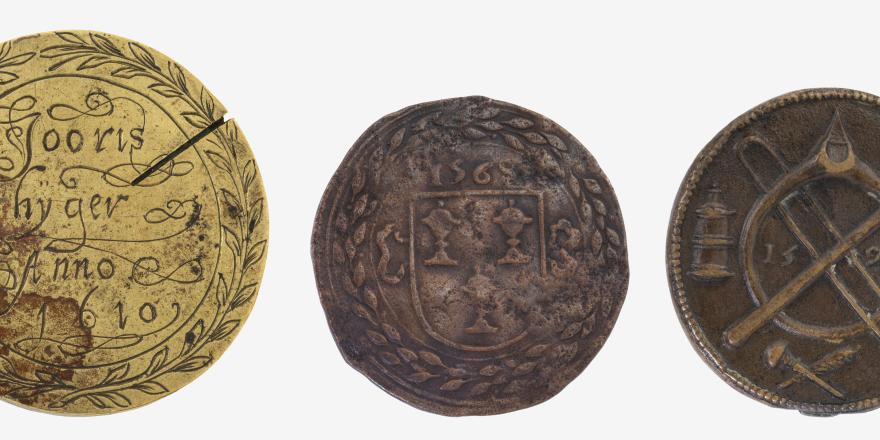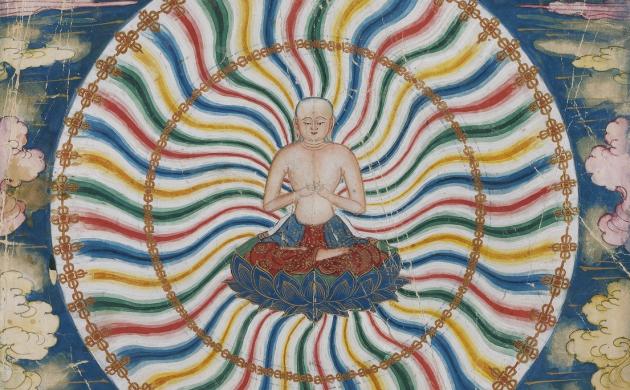Attendance token of the Antwerp goldsmith Joris Ghyger
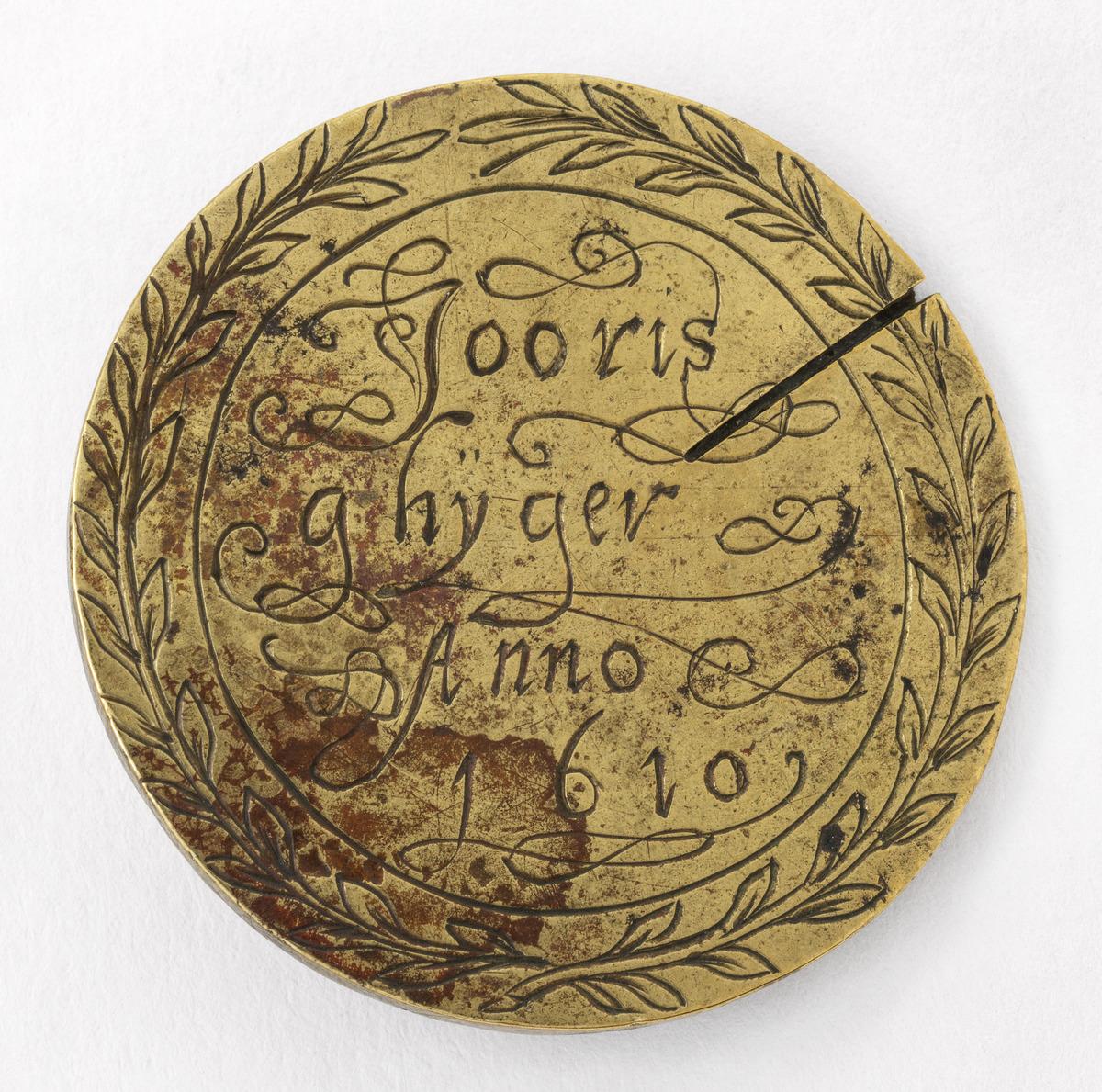
Front
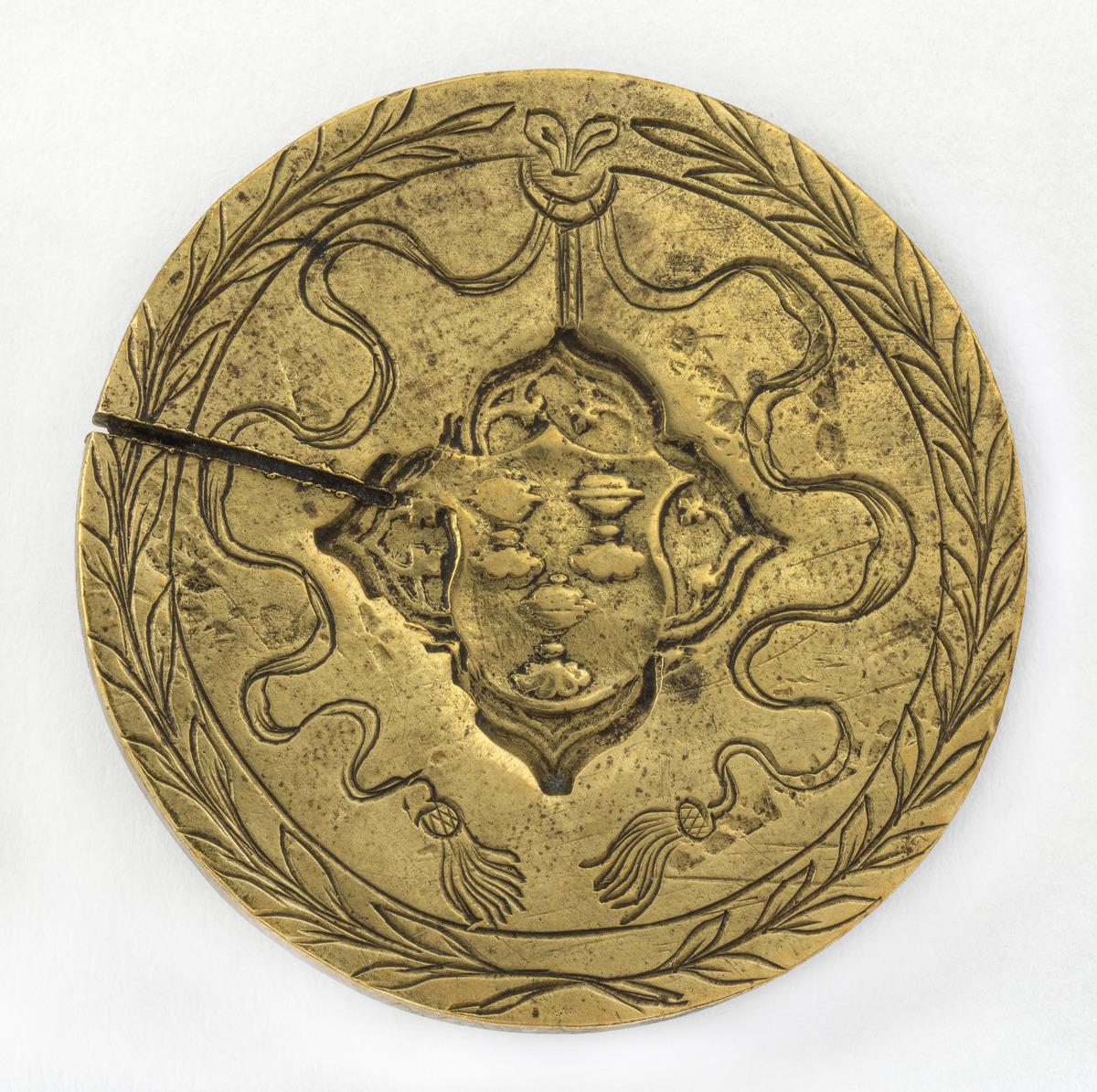
Back
Attendance token of the Antwerp goldsmith Joris Ghyger
Antwerp, 1610
Stamped and engraved brass (= an alloy of copper and zinc)
MAS, AV.B.0060
Acquired in 1969
The front of the token shows a quatrefoil containing a shield with three cups in the shape of a goblet – this was the emblem of the goldsmiths. Ribbons and crossed laurel branches have been engraved around it.
On the rear, similar surrounded by laurel branches, is the inscription Jooris I Ghyger I Anno I 1610. In 1610, Antwerp resident Ghyger, who lived in the Borse on the corner with Wisselstraat, became dean of Antwerp's guild of goldsmiths.
Token of the Antwerp goldsmiths

This token shows the year 1597 on the front. The ring with the point diamond – and with the year 1597 in it – refers to the jewellers and goldsmiths. A large planishing hammer and what is suspected to be a tenterhook have been placed in a saltire. To the left of the ring, you can also see a borax box, to the right a box of drift punches and below, an engraving chisel with a hare's foot.

Token of the Antwerp goldsmiths
Antwerp, 1597
Cast bronze (= alloy of copper and tin)
MAS, AV.B.0065
Acquired in 1969
The ‘catalogue’ of jewellers‘ tools is completed on the rear side, with what seems to be a borax pot and a coal tong crossed with a pointed chisel, along with an insert sachet with a double head in the block, wire cutters and a compass. On the right: a bundle of binding wire, a balance, a nest of weights and a soldering tip with a little pipe. In the center is a lidded goblet, which is a reference to the gold and silversmiths.
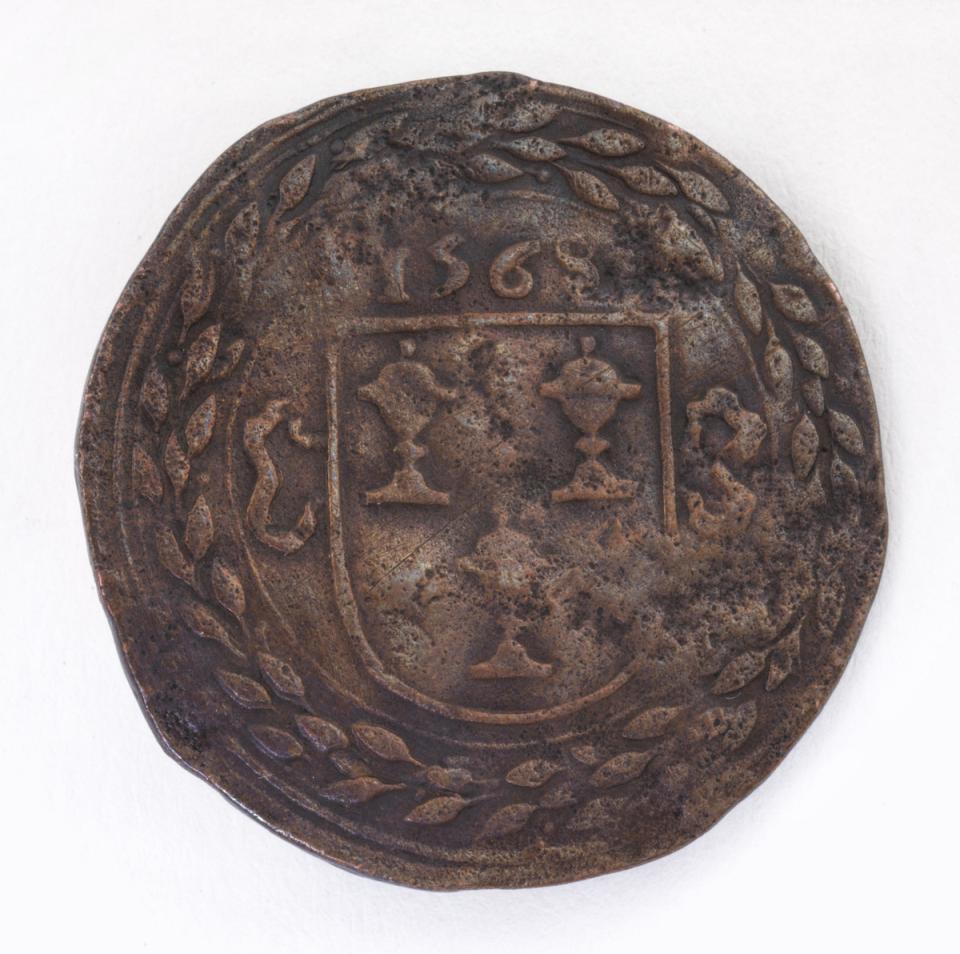
The presumed maker of this token, Jheronimus II Mannacker, was a die-cutter at the Brabant Mint in Antwerp, the institution where coins were minted.
The front shows the emblem of the Antwerp goldsmiths: three golden coppen – beakers in the form of a goblet and with a lid – in a shield. The year 1568 is above and the ensemble is surrounded by laurel wreaths.
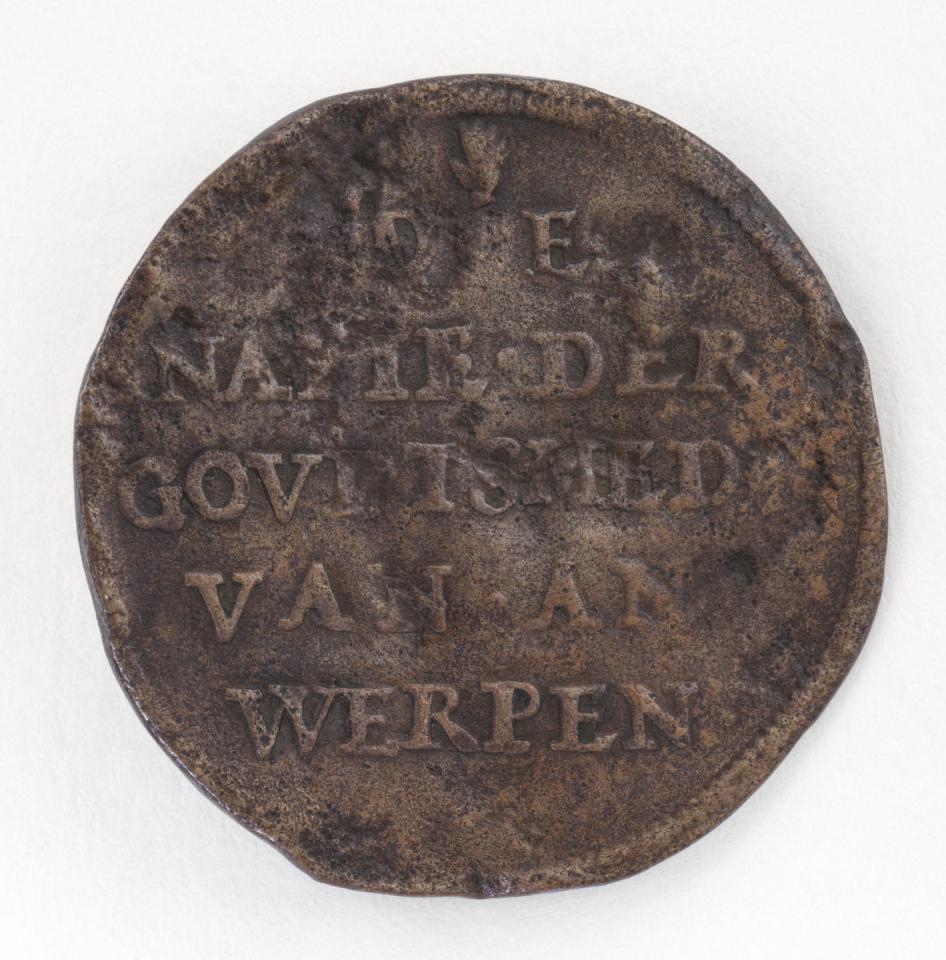
Token of the Antwerp goldsmiths
Attributed to Jheronimus II Mannacker (1521-?)
Antwerp, 1568
Wrought and engraved brass (= an alloy of copper and zinc)
MAS, AV.B.0061
Acquired in 1969
On the back we see a hand, mark of the Brabant Mint in Antwerp. Above it reads: “DE / NATIE DER / GOVDTSMEDE / VAN ANT / WERPEN”. The hand mark was also used as a town mark – that was the proof that the goldsmithing guild had approved the gold and silverwork.


